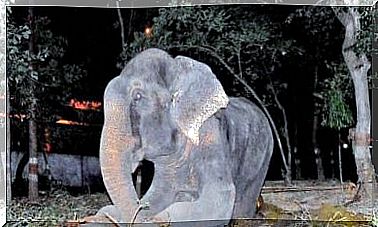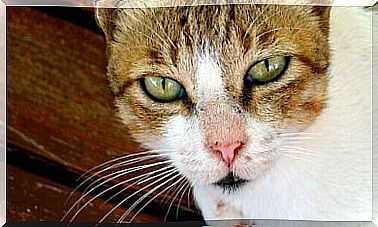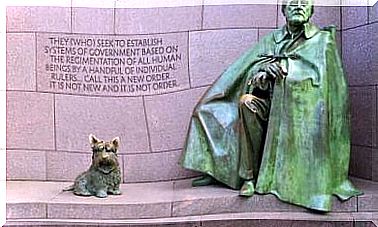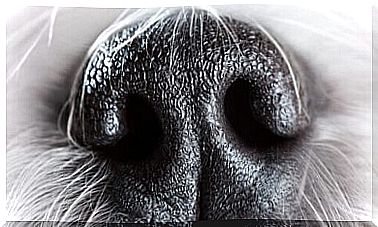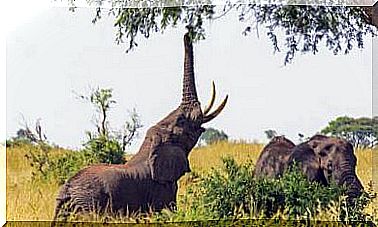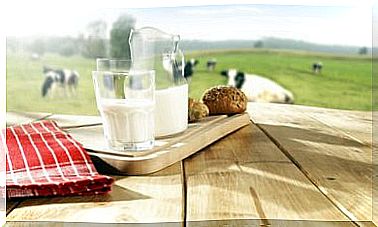Pheasant: Characteristics, Behavior And Habitat
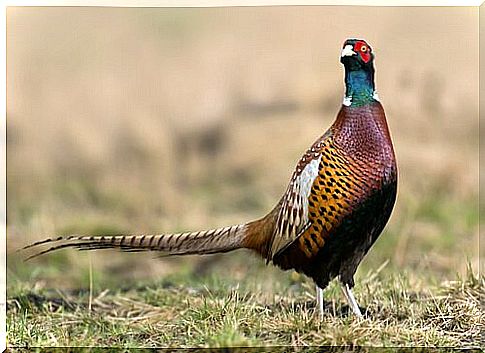
The pheasant is an extravagant bird of Asian origin. Its scientific name is Phasianus colchicus and is characterized by picturesque colors and a very stylized structure.
It lives in large forests, in different parts of the world, and has a great preponderance in the European territory. This “galliform” bird of the Phasianidae family has very particular characteristics that we will help you to learn more about in this article.
Characteristics of the pheasant
The male pheasant is about 90 centimeters tall and weighs about 1.2 kg. Its plumage is brighter and more striking than that of the female. Compared to colors, the predominant shades are red and yellow (with some shades), then again blue, green and, finally, brown.
The pheasant sheds its feathers during the first two months of life, usually during the month of September. Before reaching one year of age, however, it reaches its final size and its definitive plumage. At this stage it also experiences its reproductive maturity.
The female pheasant is considerably smaller, due to an average height of around 63 centimeters and an approximate weight of 900 grams. Its plumage is one-colored, of brown hue.
These subtle differences distinguish the male pheasant from the female. Despite the differences in the dimorphism of the species, both genera, however, share some characteristics. The head, for example, is small and round and its bone structure is very similar to that of chickens.
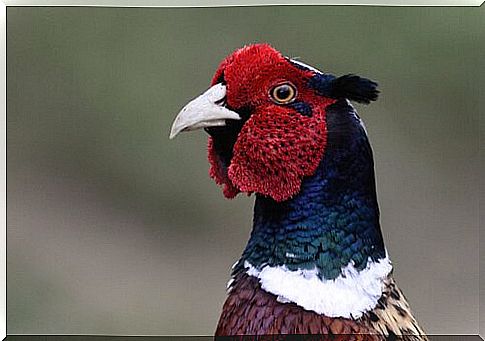
The pheasant is distinguished by its long, thin tail and gray legs. It is a very agile and majestic animal. The wings of this bird are rounded, wide and thin. This peculiarity allows them to fly vertically and reach a height of 10 meters in a few seconds.
Behavior of pheasants
The pheasant is a polygamous and gregarious bird . This bird, most of the time, walks and runs freely on land, although it also has the ability to fly short distances.
The pheasant, by nature, associates man with danger and often manages to escape hunters thanks to his marked intelligence. However, when bred in captivity, they show no fear but aggression. Even towards those who are delegated to take care of it.
Proper breeding must include large open spaces to ensure maximum mobility for the animal. The diet must necessarily be based on feed processed from first choice cereals. They are birds that love to walk on the ground and often bathe in mud. Another feature is that the pheasant climbs trees to sleep, because this is where it feels most protected.
Its breeding period begins in spring, during the months of March and April. During this time, the males begin to defend their territory by moving their wings and singing. The female lays about 14 eggs before starting the incubation phase, which lasts 23-25 days. The chicks are usually born during the month of May or June.

The pheasant feeds on plants and animal remains. Insects, worms and snails, as well as seeds, fruits and leaves are an important part of his diet. It is interesting to know that in the gastronomic field the meat of the pheasant is very appreciated for its softness and the low quantity of fat it contains.
Where do pheasants live?
The pheasant is usually found in areas connected to hunting lodges. To reproduce in complete freedom, they tend to frequent countries that have two key elements: grasslands with ponds or lakes and forests with little vegetation.
Their habitat coincides with the cultivated countryside and areas of Mediterranean scrub throughout Europe, where it is possible to see these specimens from different areas of southern Russia, as well as from Asia. The pheasant is the most widespread hunting bird in the world, as it is also found in North and South America.
This particular bird usually lives in nests that are built in the ground. Generally, between the vegetation of rural areas or on the edges of wooded areas and just below the trees.
As you have seen, the pheasant is a bird closely related to human activities such as agriculture and hunting. For this reason, animal welfare institutions and NGOs are currently working to encourage the conservation and repopulation of this beautiful bird, born to live and reproduce in freedom.

